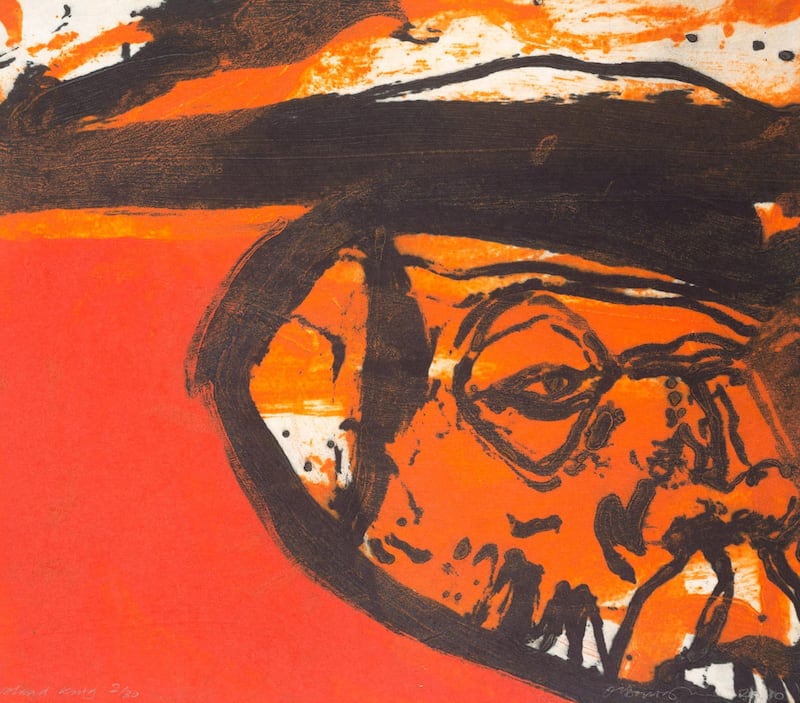What is it?
Island King is a carborundum print by Hughie O'Donoghue, part of a body of work he made inspired by the story of the Inishkea islands, off Co Mayo. The hardy, resourceful islanders refused to pay taxes, were renowned for their poitín, chose their own leaders – hence the image of the king – and attracted the disapproving attention of the Catholic Church because, it was said, they idolised a stone totem, the Naomhóg.
How was it done?
Carborundum printmaking was developed in the late 1930s and gained widespread popularity, especially among painters, from the 1980s onwards. It is the printmaking method that is closest to painting: the artist applies a paste of glue and finely ground silicon carbide to a plate, then, when it dries, inks and prints this textured ground. It's a straightforward method but allows for surprising richness of colour, tone and texture. And, perhaps most significantly, it captures and preserves the gestural spontaneity of the artist's touch very well.
Where can I see it?
Island King is included in Graphic Studio Gallery's outstanding exhibition True Grit, a survey of mostly carborundum prints made by artists at Graphic Studio Dublin over the years, most under the auspices of the visiting-artists programme.

Is it a typical work by the artist?
Yes. Although O'Donoghue was born in Manchester, his parents were Irish, and he developed strong links with Ireland as he grew up, eventually establishing a base in Co Mayo. Over time he has explored his preoccupations with community and emigration, and the relationships between people, landscape, history and memory, in many series of paintings, often on an epic scale, and in prints.
Painting and printmaking are, for him, processes of excavation and restoration, and he has delved fruitfully into archives and memorabilia, among them those directly connected to his family background, including the hard rural life of his mother’s people in north Mayo and his father’s wartime experiences in Europe.
There is often an elegiac, melancholy tone to his work, and never more so than in his Inishkea series, which is called Last Days on the Islands. Lonely outcrops at the edge of the Atlantic, the islands lie west of the Mullet Peninsula, in northwest Mayo. Inhabited on and off for hundreds of years, they were finally abandoned in the 1930s, after a disaster in October 1927, when 10 islanders, mostly young men, died when their currachs were caught in a hurricane while they were fishing. Their loss so dispirited the small, fiercely independent community that they seemed to lose all heart. Gradually, they moved to the mainland, mostly to new homes on the Mullet, within sight of the islands.
True Grit is at Graphic Studio Gallery, Temple Bar, Dublin, until March 10th












